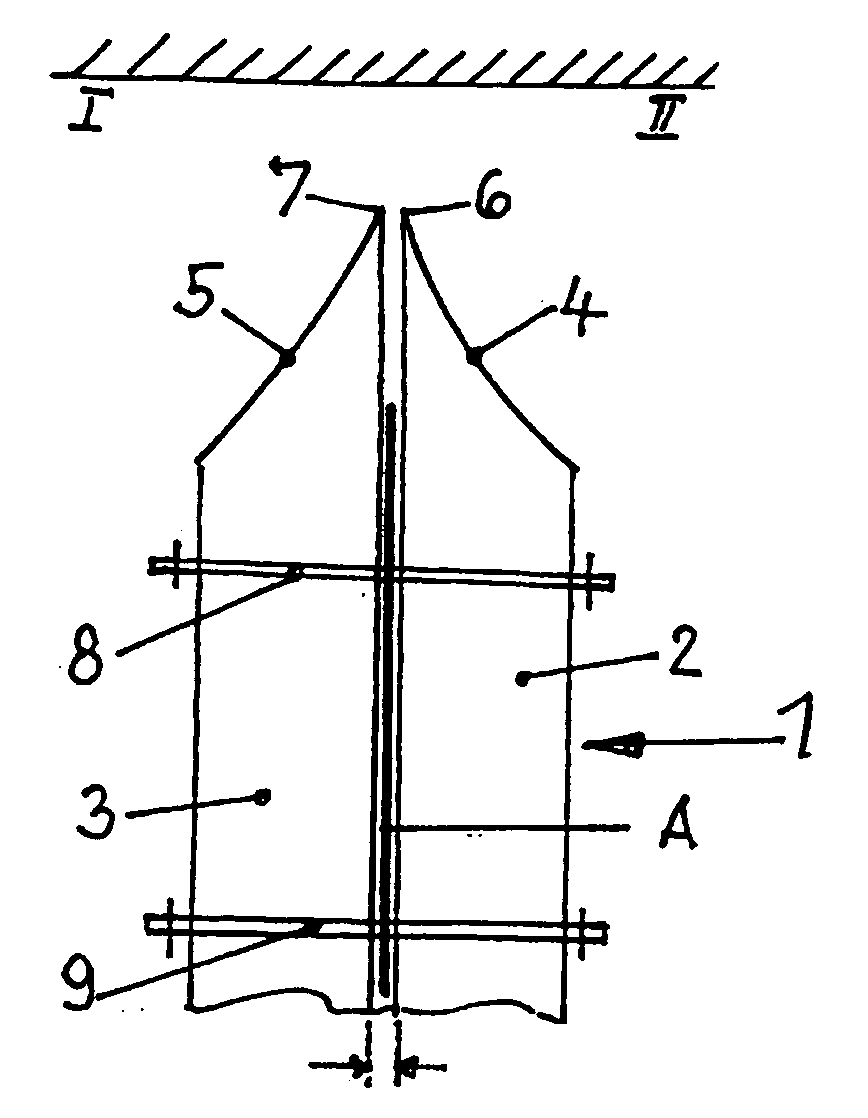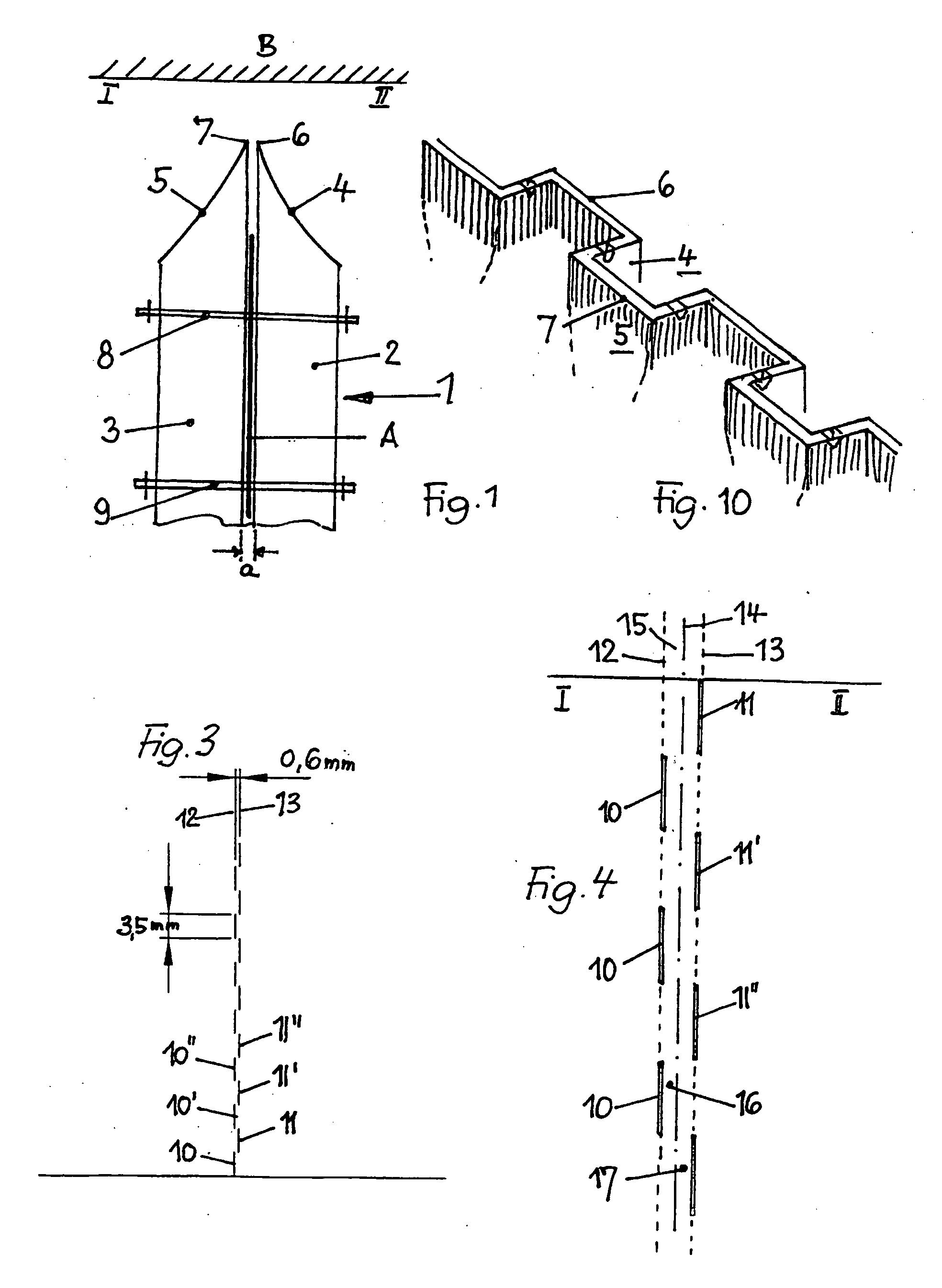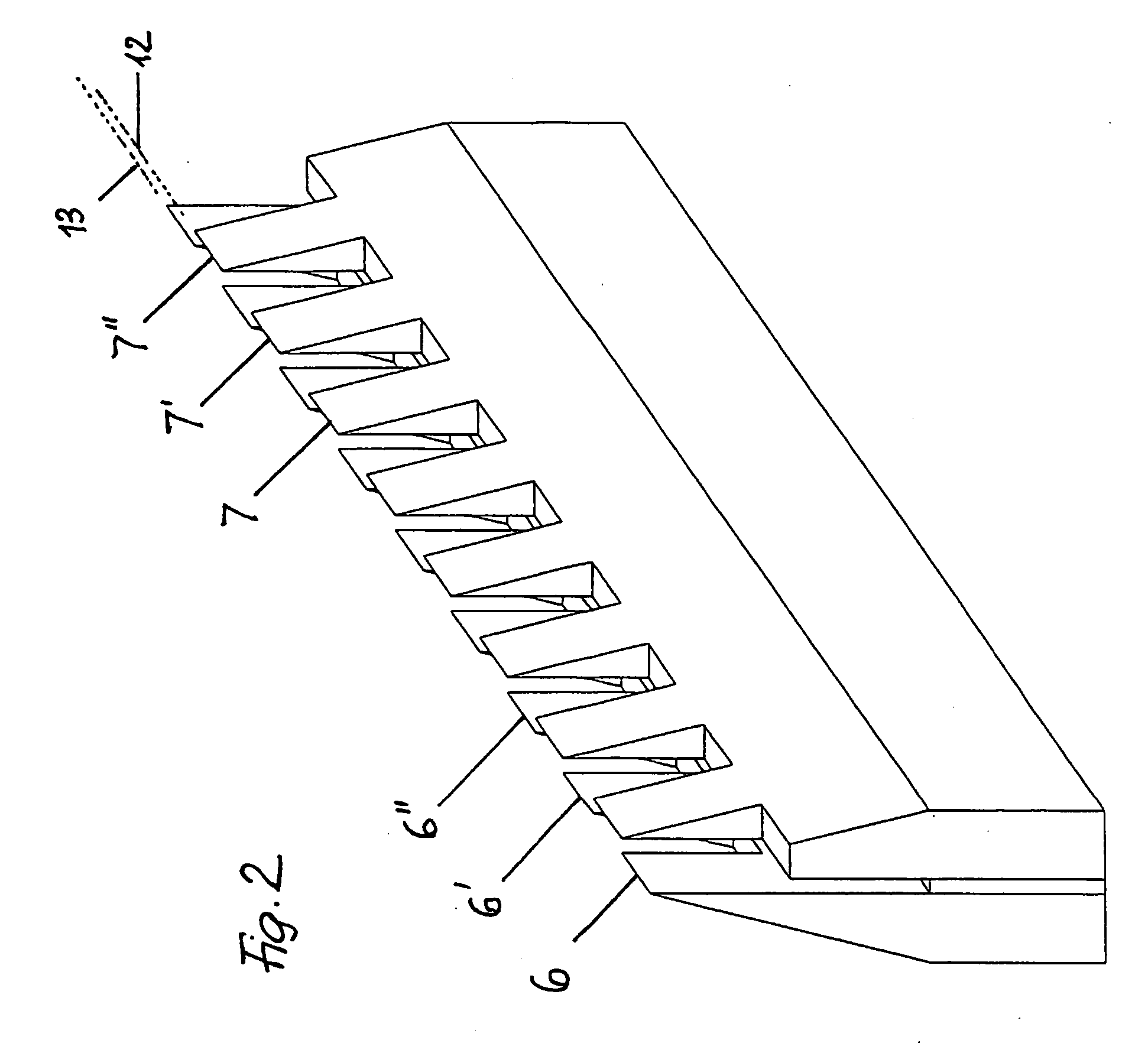Adhesive binding method and device for carrying out this method
a technology of adhesive binding and binding block, which is applied in the direction of book binding, bandages, printing, etc., can solve the problems of limited bonding area strength, unsatisfactory solution especially for small-scale series production, and no satisfactory solution for binding book blocks
- Summary
- Abstract
- Description
- Claims
- Application Information
AI Technical Summary
Benefits of technology
Problems solved by technology
Method used
Image
Examples
Embodiment Construction
[0023] In FIG. 1 a double perforating knife 1 is shown, which consists of two individual perforating knives 2, 3. The knife teeth 4, 5 and the cutting edges 6, 7 are schematically shown. The two individual perforating knives 2, 3 have a distance a from each other at least at the cutting edges, this distance a can be adjusted according to the thickness of the material of the sheet B to be perforated, and can be varied by additional spacers A. The perforation knives are releasably fastened by screws 8, 9.
[0024] The double perforation tool 1 is shown in a perspective view in FIG. 2 showing its structure and its operation mode. The cutting edges or teeth 6, 6′, 6″, . . . are for punching the slots 10, 10′, 10″, . . . , the cutting edges or teeth 7, 7′, 7″. . . are for punching the slots 11, 11′, 11″, . . . according to FIG. 3. With a special embodiment of the invention the distance of the two perforation lines 12 and 13 is for example 0.6 mm, the length of a tooth 6 or 7 is for example...
PUM
| Property | Measurement | Unit |
|---|---|---|
| length | aaaaa | aaaaa |
| distance | aaaaa | aaaaa |
| thickness | aaaaa | aaaaa |
Abstract
Description
Claims
Application Information
 Login to View More
Login to View More - R&D
- Intellectual Property
- Life Sciences
- Materials
- Tech Scout
- Unparalleled Data Quality
- Higher Quality Content
- 60% Fewer Hallucinations
Browse by: Latest US Patents, China's latest patents, Technical Efficacy Thesaurus, Application Domain, Technology Topic, Popular Technical Reports.
© 2025 PatSnap. All rights reserved.Legal|Privacy policy|Modern Slavery Act Transparency Statement|Sitemap|About US| Contact US: help@patsnap.com



